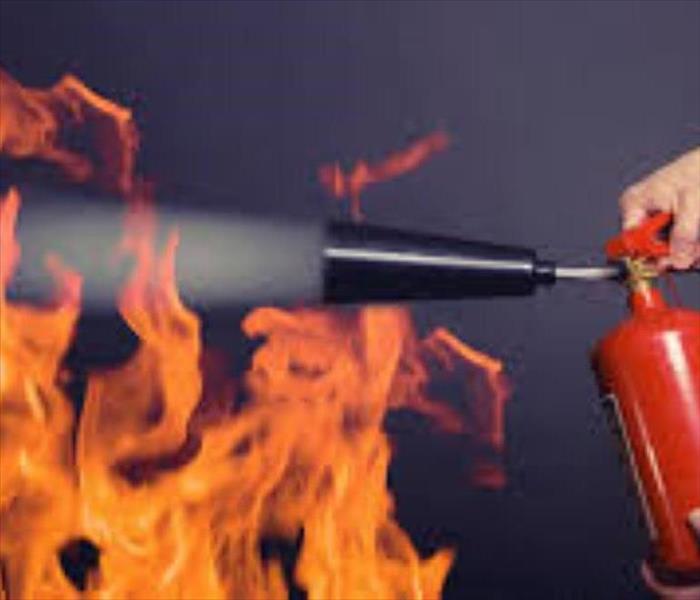Types of Fires and Extinguishers!
10/25/2018 (Permalink)
A fire is a dangerous situation that can quickly become out of control. The first line of defense in battling the flames is a fire extinguisher, but did you know that there are different types of extinguishers for different fires? Hopefully you never encounter such a situation, but knowing the source and having the proper equipment is one easy way to prepare.
The Five Classes of Fires
The National Fire Protection Association has created a standard known as the NFPA 10 for portable fire extinguishers.
Class A fires group ordinary combustibles such as wood, paper, cloth, rubber, and plastics.
Class B fires are any flammable liquids such as gasoline oils, solvents, and alcohol. Flammable gases like propane are also under this class.
Class C fires involve any energized electrical equipment like computers or appliances.
Class D deals with combustible metals like magnesium, sodium, lithium, and potassium.
Class K fires specifically group liquid fires involving cooking oils and greases.
Types of Extinguishers
You need the right tool for the job, and fire extinguishers are no different. Knowing which extinguisher fights which fires best is essential to stop the fire from spreading or re-igniting.
Water and Foam: To be used for Class A fires only. Never use on Class C fires as it can create a shock hazard!
Carbon Dioxide: Can be used for Class B and Class C.
Multi-Purpose Dry Chemical: For use on Class A, B, and C fires. This is the most widely used type of extinguisher.
Ordinary Dry Chemical: For Class B and C fires only. Using an ordinary dry chemical extinguisher on a Class A fire can cause it to re-ignite even if it appears to be fully out.
Wet Chemical: For Class K fires and some Class A fires. These were developed specifically for cooking incidents.
Clean Agent/Halogenated: Effective for Class A, B, and C, though smaller clean agent extinguishers may not be rated for Class A fires.
Dry Powder: Similar to dry chemical, but for Class D fires only.
Water Mist: For use with Class A or C fires where contamination is a concern.
Multi-Purpose Cartridge Operated Dry Chemical: Similar to regular dry chemical extinguishers and can tackle Class A, B, and C fires.
Ordinary Cartridge Operated Dry Chemical: For Class B and C only.
Remember that a portable fire extinguisher is only meant to put out a fire of limited size. If you feel that you are in danger or are not confident in using equipment, leave the area and call 911.






 24/7 Emergency Service
24/7 Emergency Service
